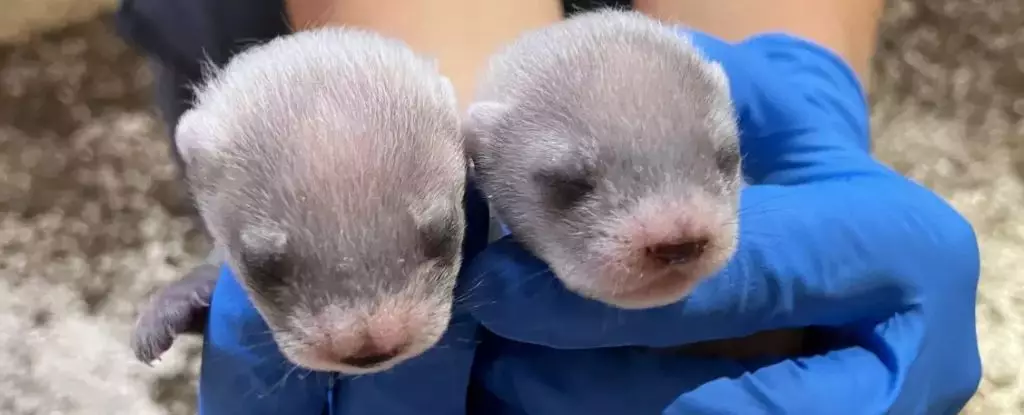In the realm of conservation biology, few stories resonate as deeply as that of the black-footed ferret (Mustela nigripes). Once deemed extinct in 1979, this small mammal has undergone a remarkable transformation over the last four decades through the application of modern scientific techniques. Cloning, a once-controversial and often misunderstood process, has become a beacon of hope for the black-footed ferret and signals significant advancements in conservation methods. The birth of two healthy pups from a cloned mother named Antonia, derived from the last wild ferret known as Willa, illustrates a blend of technological progress and species recovery efforts that hit at the heart of conservation debates.
Historically, the black-footed ferret inhabited the expansive shortgrass prairies of North America. However, by the late 20th century, their population plummeted primarily due to habitat destruction, loss of prairie dog colonies which constitute their primary diet, and various diseases. The awakening of scientists to the dire situation led to the initiation of a captive breeding program in the 1980s, starting with merely 18 individuals captured from a small population in Wyoming. These initial efforts laid the groundwork for the eventual reintroduction of the species into the wild, yet the surviving population remains perilously low, with estimates of approximately 350 black-footed ferrets currently inhabiting their native territories.
Antonia’s cloning—a product not merely of scientific ambition but of collaborative effort among various institutions—highlights the potential for genetic diversity to bolster the species’ survival prospects. By leveraging an extraordinarily diverse tissue sample from Willa, Antonia was created with three times the genetic variety than is typical among current ferret populations. This genetic infusion is critical, as low genetic diversity can lead to inbreeding and increased vulnerability to diseases. The excitement surrounding Antonia and her pups encapsulates a pivotal moment in conservation genetics, demonstrating how innovative tools might play a role in revitalizing struggling populations.
Yet, the conversation surrounding cloning and its effectiveness in fostering species recovery does not happen in a vacuum. Critics like wildlife ecologist David Jachowski emphasize that celebrating cloning should not draw attention away from the critical issues of habitat loss and human-wildlife conflicts that plague endangered species. There exists a danger that reliance on technical solutions like cloning might undermine more traditional but equally essential conservation measures such as habitat restoration and ecosystem management.
As Antonia’s pups enter the world, the scientific community remains split on the broader implications of cloning for conservation. While the capability to rejuvenate a species through genetic intervention is exciting, it is essential to consider whether such investments could be more effectively utilized in safeguarding habitats, controlling invasive species, or resolving human-wildlife conflicts. The contention highlights a significant underlying issue: can conservation efforts genuinely address the root causes of species decline when exploring technological fixes like cloning?
The challenges ahead for the black-footed ferret extend beyond simple numbers. A sustainable future for these animals requires re-establishing their habitats and ensuring the ecological balance is maintained to support their prey—primarily prairie dogs. As experts debate the long-term viability of cloning techniques, it becomes increasingly apparent that a harmonious blend of genetic management and habitat preservation is necessary to secure a future for the black-footed ferret, among other endangered species.
The black-footed ferret’s journey from near extinction to the birth of cloned offspring embodies both the promise and the complexity of modern conservation. While Antonia’s successful reproduction shines a light on the potential role of cloning in genetic management, it serves as a sober reminder of the integrative approach necessary for lasting change. The ultimate challenge lies in sustaining efforts that prioritize ecological integrity alongside innovative technological solutions. Only with a commitment to habitat preservation and an understanding of the ecological dynamics can the black-footed ferret truly recover and thrive in the wild—not merely as a product of science, but as a vibrant part of the prairie ecosystem.

